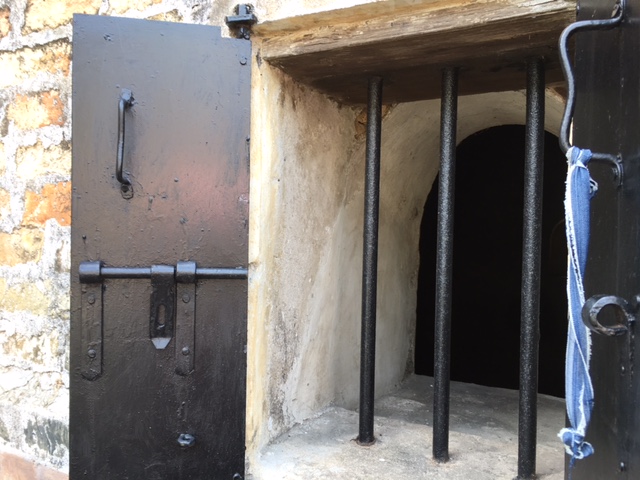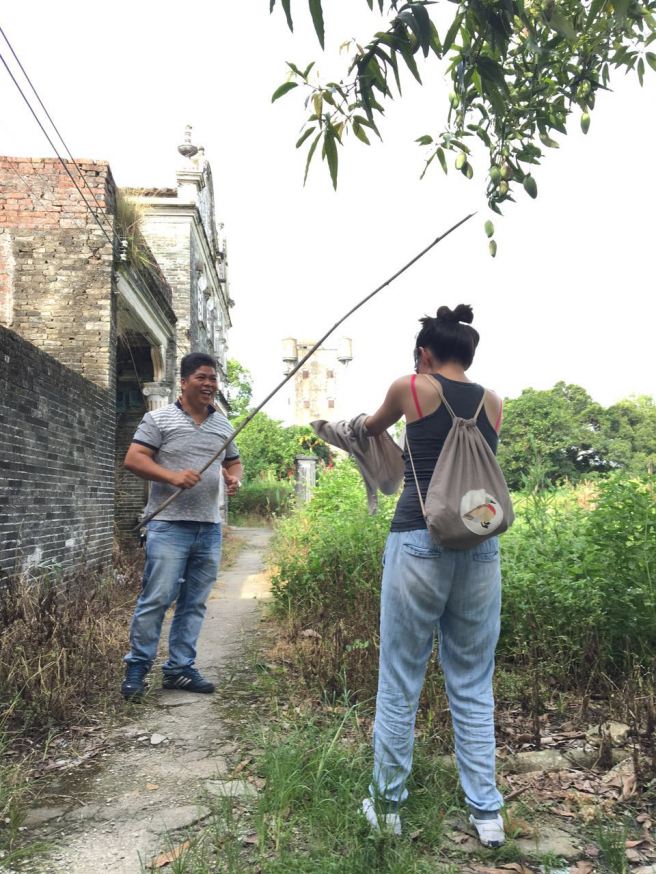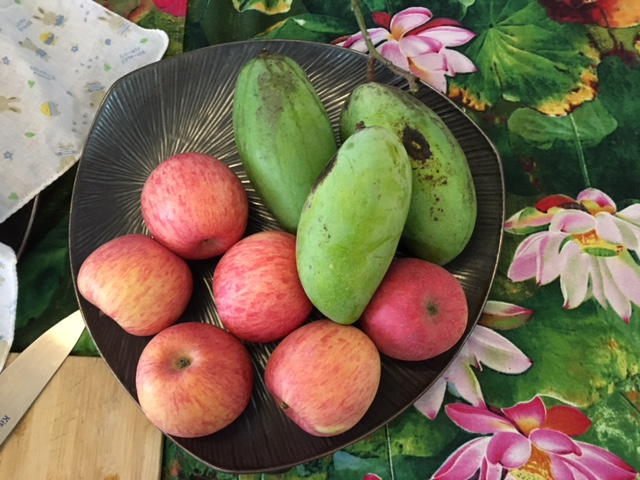After lunch, Rocky left all of us to our own devices because he had something to take care of downtown. We went to Sanmenli to see Yinglonglou again, because I felt that I could explain a teensy bit about Sanmenli from my adventures a couple of days ago. Also since I had biked by myself, I had missed seeing the Canadian Village (加拿大村) just across the highway.
So there I was, back in Sanmenli, giving a tour based off everything that the Guan auntie and granny had told me last time I was here. I saw the Guan auntie with the wampees and her bird’s nest again! One of Rocky’s friends said that it was a swallow’s nest!
Laura had made the same remark that I had. She said, “That’s good luck.” But Guan auntie had just replied, “Ah, they’re all only superstitions…”
The Guan auntie was so kind. Upon seeing me thunder into her village with a big group of tourists, she still just asked me, “Did you find your way back to Tangkou alright the other day?” Of course. Her directions had been superb.
Some of Rocky’s friends bought stuff from the three little vendors outside Yinglonglou. Yinglonglou doesn’t receive very many visitors even though it’s the only free heritage site to tour. Rocky says that because it’s free, nobody advertises Yinglonglou in the brochures.
After reaching the actual Yinglonglou, I lost steam, or in other words I ran out of content to deliver. I turned the tour guiding over to CJ. As expected, he knows so much about all the architecture in this area! He explained that the reason why the bricks were red bricks on the bottom and qing bricks on the very top was because the red brick was a cruder, earlier version of the qing brick. It took awhile to develop the technology to bake a qing brick, which is denser and smaller than the red brick. We can see the difference in the size of the bricks. I could have also made the effort to read the Chinese-English plaque on the wall that explained how the third level of qing bricks was added in the early twentieth century.
CJ also explained in Mandarin to Tony that most of the Diaolou that we see in Kaiping are never made with bricks, but rather reinforced concrete. Brick is not the material for building tall buildings. This is why Yinglonglou, which is a watchtower!, is so massive. CJ had gestured towards the low houses around Yinglonglou, which were covered by qing bricks. (Old Chinese houses are actually made of qing bricks instead of just being decorated with them by the Kaiping Diaolou conservation people!)
No need to wait until the Spring Festival to enter Yinglonglou! There was an open window that showed us all an idea of how thick the walls are. They probably really are a meter thick!

I probably seem to be describing the Kaiping Diaolou Conservation people with a really negative tone. As in, I probably seem to be displeased with their efforts to turn Sanmenli or other places into places that attract tourists. And you know, there are always things to be constructively critical about. The idea of creating an environment that aspires to become some tourist’s imagination of an “authentic,” timeless southern Chinese village is odd, and the idea of using real people and places and changing their living narratives is uncomfortable. I think that Rocky thinks that rather than turning sites into tourist spots, turning sites into educational centers such as Cangdong village would be so much better. This is what I’m assuming from everything he’s said and done, though I have yet to ask him more what he thinks precisely.
I may be overly harsh on the Kaiping Diaolou Conservation people, though. Because if it were up to me, I’m not exactly sure how I would go about it. After leaving Sanmenli, Zhou Sir took us all to go to the Canadian village about a two minutes’ drive away.
The Canadian Village used to be the home of many Chinese who migrated to Canada. It used to have an original Chinese name, of course. But over time, as more and more villagers left for Canada and other places overseas, the village emptied and became known as the Canadian village. The last villager of the Canadian village left in 1951.
Last year there was a Stanford group of archaeology students and professors along with some Chinese professors who had a sort of retreat at Cangdong, I think. Rocky shared a video of their debriefing interviews on their stay in Kaiping and their experience at Cangdong, and there was a Professor of Chinese History named Matthew Sommer who described his impression of a lot of the Kaiping villages that he visited as “post-apocalyptic.” I think that’s a really good word to use. There was no other village where I felt that more strongly than at the Canadian village.
The Canadian village is gorgeous. It’s prettier than Sanmenli. Even prettier than the Rongguifang (荣桂坊) next door to Tangkou. The buildings here were so extravagant. There were doric orders and even a classical pediment with a faded orange maple leaf in the middle. Nana sent me a documentary episode on ifeng (you need a proxy that says you live in China to watch this… or you just need to be in China) of a piece on the Canadian Village. They explained that the Canadian Village invited westerners to design their buildings, which explains to me the added classical elements in this village.
The villa on the left was once inhabited by the Guan family member who built the Guan library in Chikan. Rocky explained that the Canadian village was at one point acquired by the government to develop however which way. However, the Canadian descendants of the original villagers didn’t give permission to touch the estates. But the overseas descendants also have zero interest in coming back to see what they’re like, because they’re so culturally disconnected from their parents and ancestors’ world in rural Kaiping. BUT, it’s a huge Chinese taboo to sell the ancestral home. It’s kind of a frustrating situation, because nobody really looks after these buildings, and they’re left to weather and get covered by plants. I think there might be a couple of guys assigned to kind of keep an eye on the village since it gets robbed every now and then, but even so… just look at all the plants that have grown over the villa’s front gates.
The little house with the maple leaf pediment really makes this village feel post-apocalyptic and otherworldly. Canada chose its flag in the middle of the twentieth century. And yet, these are already ruins. In photos, it’s easy to isolate a scenic building and crop out wandering tourists with their selfie sticks. But when I took these pictures, it was really, really quiet and lonely all around. Our group wasn’t that big — Nana, CJ, Tony, Laura, me, three of Rocky’s friends, and Zhou Sir, our driver. There was the sound of some cicadas and ducks in the distance. Nobody lived in these once-glorious Chinese-western mansions getting slowly tucked into the earth by wildlife. CJ described the old gated villa as: “the perfect location for filming horror stories.” Very Romantic stuff.
I wonder how long the people lived in their buildings before they left. It’s as if they all left not a year after their house warming parties. Everything in the twentieth-century happened so darned quickly.
As I was taking a photo of this cool wall with the square pilaster thingies, CJ asked me, “Do you know what this wall is?”
Nope! Didn’t have a clue!
“This is a wall purposefully built in front of the entrance of this house. It’s called a zhao bi (照壁). They put a wall in front of the entrance because their house faces their fields. In feng shui, a house that faces a field is vulnerable to all sorts of evil spirits flying in from the wide, open space, so they built these zhao bi as supernatural defense.”
I would have guessed that it was really well-preserved wall to a garden shack that fell apart! Always learning lots and lots from CJ Laoshi (老师).
Here is a close up of a pretty stucco relief, which, like at Zilicun (and basically everywhere else), feature local fruits or gourds and other symbols for fortune and prosperity.
I also stuck my phone inside one of the broken windows to snap a photo of the inside. This family left behind so much stuff, as if someone had given them a plane ticket and said, “Leave Guangdong this minute!” I asked CJ why there was so much stuff left behind, why they looked like they left in such a hurry. He explained that when people left in the 20s or 30s, they must have been leaving violent or chaotic situations, and they must have thought that they would only be leaving temporarily and that they’d come home soon. I’m not sure about this particular house, though. I really doubt that all of this stuff has been there since like 80 years. But CJ told me about a story that Professor Tan once told him about a family that left. The mom had said to her children, “We’re leaving! Let’s go!” And the children thought that they would be back soon so they didn’t really take anything with them. Little did they know that once they left for Hong Kong or America or wherever, they weren’t able to come back for many, many years. Professor Tan had brought one of the children back to his childhood home, and when he opened the door to his room, he started crying at the sight of the untouched, dust-covered room that he left all those years ago.
–
On our way out, Zhou Sir and I ganged up to steal pick some mangos! They were so big, though they’re not ripe yet!

Zhou Sir looks so excited that the mango dropped into my sweater net. I was so relieved it didn’t drop on my head. We picked two more and then we all scurried back to the van before someone yelled at us. But who would have, anyway?










